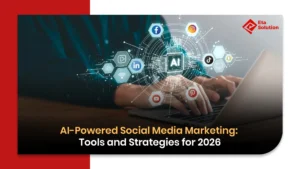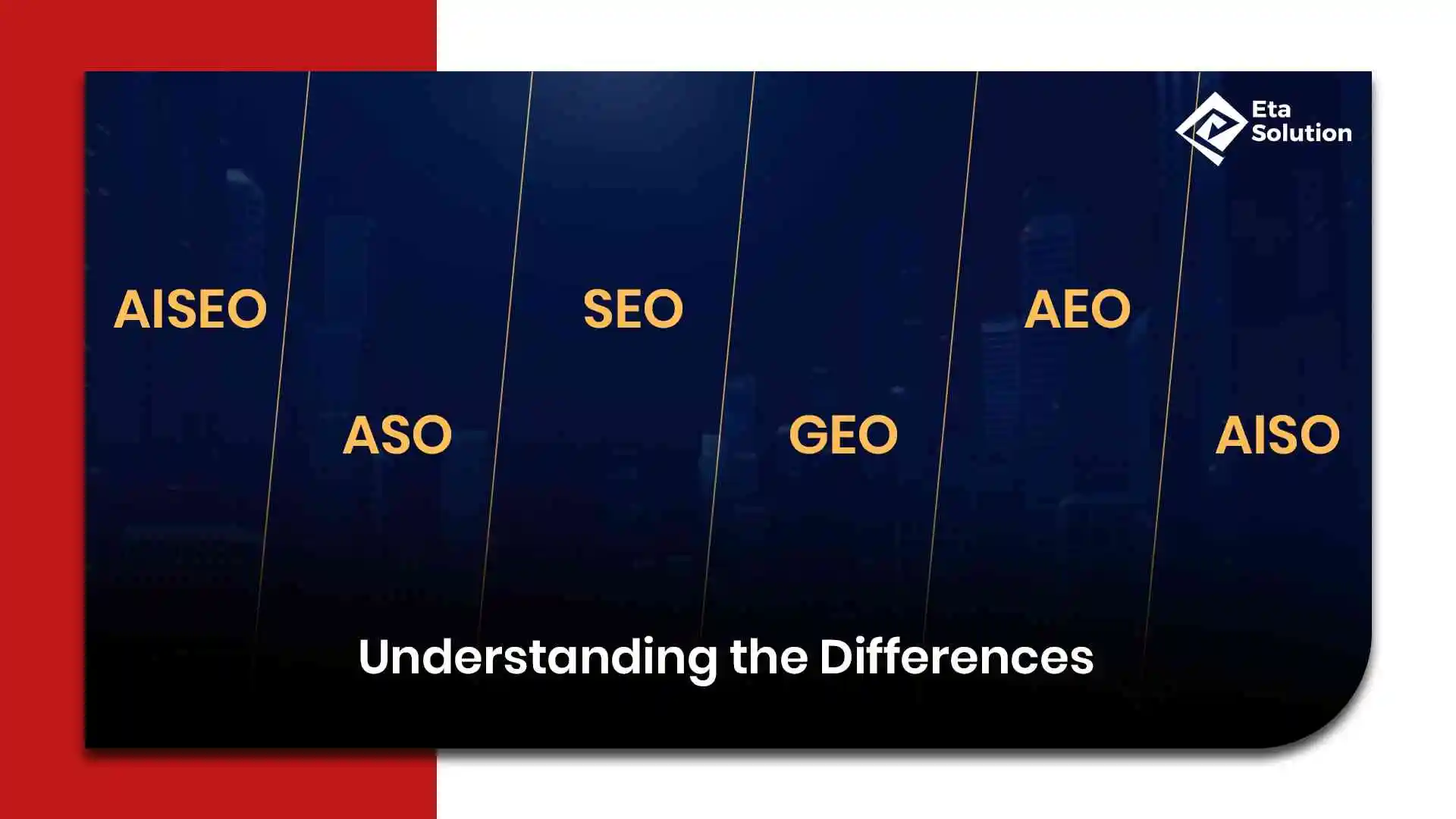
AISEO, ASO, SEO, GEO, AEO & AISO: Key Differences Explained
The number of “optimization” acronyms in marketing has exploded. The couple of years since the rise of SEO have seen the nomenclature of related fields multiply exponentially: from ASO through AEO, GEO, AISEO, and even AISO. On the surface, they seem to be just slightly different names for the same thing, but it turns out to be a very complicated matter.
It is a common mistake that marketers confuse these terms and use one incorrectly when they plan their campaigns, which in turn go astray. The difference between SEO and ASEO or AISEO vs ASEO might feel like jargon until you see its impact on campaign budgets, conversions, and customer reach.
Gartner’s 2024 survey revealed that 62% of CMOs invest in at least three optimization strategies at once, but most admitted they couldn’t clearly define each. That’s not just confusion, it’s inefficiency that can drain millions. This blog aims to bring clarity, showing not only what each optimization method is but also how it reshapes digital marketing in 2025.
What is c? Role of Artificial Intelligence in SEO
AISEO explained: AISEO is one of the advanced technologies that uses artificial intelligence as a major tool to enhance traditional SEO. The artificial intelligence systems do thorough research on the current trends, ranking signals, competitor content, and sometimes even the upcoming algorithms, so that marketers can just sit back and relax.
The value lies in predictive capabilities. For example, tools like Clearscope or SurferSEO don’t just suggest keywords; they map semantic clusters, aligning your content with how people naturally ask questions. Search engines love this because it reflects real human behavior.
New research tells us that 48% of Google’s first-page results in 2025 were optimized with the help of AI-assisted workflows. Artificial Intelligence SEO is radically different from traditional SEO, which merely concentrates on backlinks or the on-page elements of a webpage.AISEO uses the latest SEO techniques such as natural language processing (NLP)-based keyword grouping, AI-powered SERP analysis, and automated A/B testing of content formats to get ahead.
Think of it as a safety net while traditional SEO reacts to algorithm updates, AISEO anticipates them.
What is ASO? App Store Optimization Explained
While websites dominate Google, apps dominate our mobile lives. ASEO app optimization, or ASO, ensures your app is discoverable on platforms like the App Store or Google Play.
It isn’t only about keywords. App ranking depends on app title, description, visuals, update frequency, and reviews. In contrast with modern SEO methods, where backlinks are crucial, ASO gives more importance to engagement and user feedback.
A case worth noting is Duolingo’s ASO campaigns. By experimenting with seasonal keywords and testing different screenshots, they saw a 40% growth in installs in one year. This illustrates that ASO is about constant iteration, not a one-time setup.
For businesses with mobile-first revenue, ignoring ASO is like leaving half the market untapped.
What is SEO? Search Engine Optimization Basics
Search Engine Optimization is the foundation of digital visibility. In 2025, Google will handle 8.9 billion daily searches. Ranking for the right ones determines whether your brand thrives or fades into obscurity.
Traditional SEO emphasized keywords and backlinks. But today’s advanced SEO strategies revolve around topical authority, content depth, and technical health.
For example, HubSpot’s ranking dominance comes not just from keywords but from its topic cluster model, linking multiple posts to authoritative pillar pages. This shift highlights the difference between SEO and ASEO: while SEO builds structure, AISEO adds intelligence.
Marketers can’t afford to see SEO as static; it’s evolving alongside AI, voice, and even answer-first engines.
What is GEO? Geolocation and Geo-Targeted SEO
GEO targeting SEO is about connecting with audiences where they are. It ensures that a coffee shop in Austin isn’t showing up in searches for customers in Seattle.
Statistical data support this with the numbers: 78% of mobile searches with local intent result in an offline purchase within 24 hours. This is an extraordinary ROI that is difficult to match with most digital campaigns.
Nevertheless, GEO is not only about “near me” searches. It also covers multilingual optimization, location-specific backlinks, and region-based promotions. As an illustration, a store can start geo-personalized landing pages for different states, customizing the offers according to local trends.
The key is granularity. Brands that go beyond generic local SEO and embrace hyper-local campaigns see stronger conversions.
What is AEO? Answer Engine Optimization in the Age of AI
As AI and voice assistants rise, search engines are shifting from “showing results” to “giving answers.” That’s where AEO voice search SEO becomes critical.
Imagine someone asks Siri: “Best running shoe under $100.” The brand that is optimized for AEO isn’t just listed, it’s the spoken answer. This requires structured data, FAQ schema, and natural language optimization.
In 2025, over 52% of US households use voice assistants daily. Amazon, Nike, and Domino’s Pizza are already ahead, making their content voice-search friendly.
AEO isn’t about chasing keywords; it’s about predicting questions and framing content as direct, conversational responses.
What is AISO? Artificial Intelligence Search Optimization
AISO AI search optimization is the newest entrant. Unlike AISEO, which uses AI for Google, AISO optimizes directly for AI-driven search engines like ChatGPT Search or Perplexity.
These engines don’t rank links in the traditional sense. They summarize content and cite sources. This means marketers must adapt, focusing on context-rich, citation-worthy, and conversational content.
Industry insiders reveal that some publishers are already experimenting with AISO-first formatting, ensuring their sites are structured to be pulled into AI responses.
This isn’t futuristic speculation. As AI-native search gains traction, AISO will decide which brands are visible in a search experience without “page one” results.
Key Differences Between AISEO, ASO, SEO, GEO, AEO, and AISO
At a glance, these acronyms seem interchangeable. But their applications differ:
- SEO builds website visibility.
- AISEO strengthens SEO using AI intelligence.
- ASO improves app discovery in app stores.
- GEO ensures local reach.
- AEO targets voice and AI-generated answers.
- AISO prepares content for AI-native search engines.
Put simply: SEO vs ASEO is traditional vs AI-assisted. AISEO vs ASEO is web vs app. Understanding this prevents wasted efforts and ensures campaigns hit the right channel.
AISEO, ASO, SEO, GEO, AEO & AISO – Platforms Where They Apply
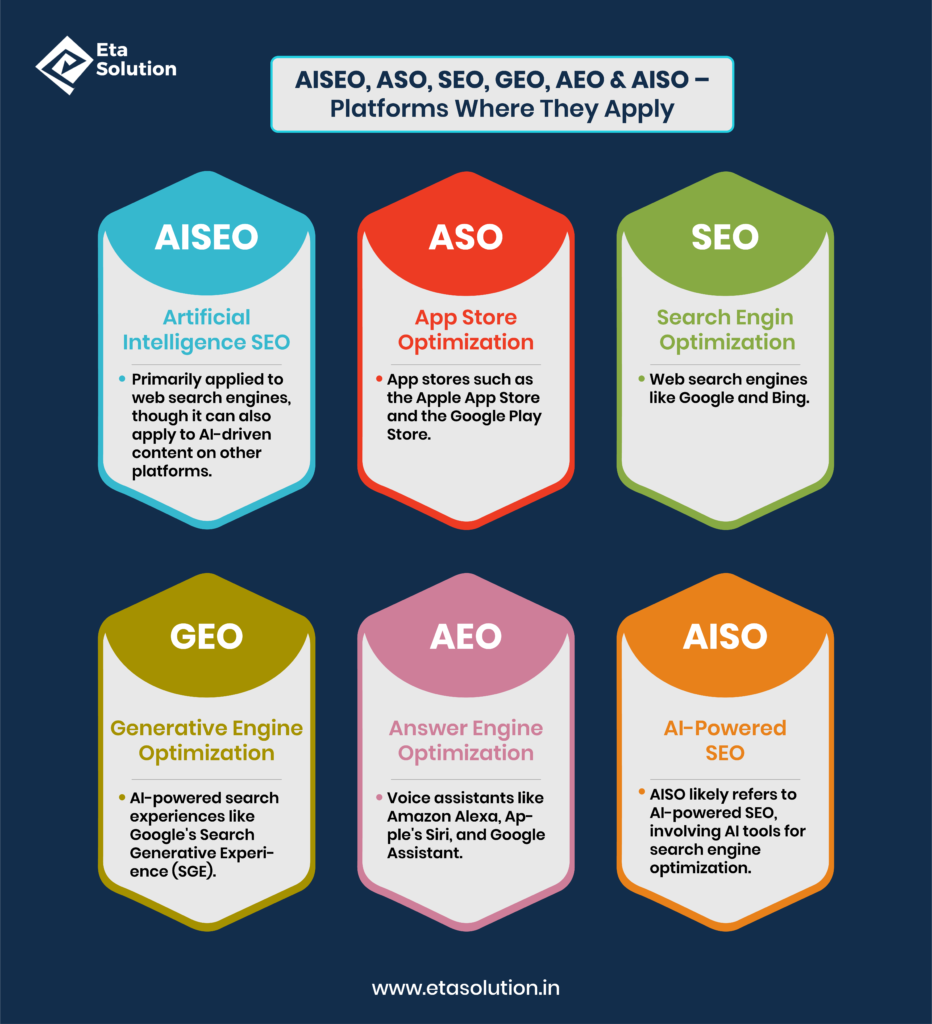
How Each Optimization Impacts Digital Marketing Strategies
Each optimization creates a unique impact:
- Retailers combine GEO with SEO to capture both local footfall and online buyers.
- Fintech apps rely on ASO for installs while leveraging AISEO for blog content.
- Global enterprises embrace AEO to secure voice-driven leads while preparing for AISO to remain competitive in AI-native search.
Amazon illustrates this integration. Its Alexa devices rely heavily on AEO, while GEO targeting and AISEO refine its massive eCommerce presence. This layering approach is what drives market dominance.
When to Use Each Optimization Technique for Best Results
No single method works everywhere. Businesses should:
- Deploy SEO for core website ranking.
- Use AISEO when campaigns demand scale and adaptability.
- Adopt ASO for app-driven growth.
- Invest in GEO for location-based traffic.
- Build AEO strategies to win voice search.
- Experiment with AISO to stay ahead of AI-driven search evolution.
The smartest brands use a mix, balancing immediate ROI with long-term readiness.
Common Challenges Marketers Face with Multiple Optimization Types
Managing six different optimization approaches isn’t easy. Marketers face:
- Resource allocation issues: budgets are spread too thin across campaigns.
- Measurement gaps SEO has clear KPIs, but AISO’s metrics remain undefined.
- Confusion around SEO acronyms explained: teams often conflate ASO with AEO or AISEO with AISO.
Overcoming these challenges requires dedicated teams or expert agencies that specialize in multi-optimization strategies.
The Future of Digital Optimization: What to Expect Next
The next decade of optimization won’t resemble the last. Expect:
- AI-native search engines gaining mainstream use.
- AEO and GEO merging as hyper-local voice queries grow.
- New types of SEO 2025 surfacing, driven by AI adoption.
- Agencies offering unified optimization services under one roof.
Forward-looking brands are already partnering with the Best digital marketing agency in Ahmedabad and other global hubs to design layered strategies. Those who treat these as silos risk falling behind.
Final Thoughts
The growing alphabet soup of optimization isn’t just about fancy acronyms; it’s about survival. Choosing between AISEO or AISO, or knowing when ASO matters more than GEO, determines competitive advantage.
The big question remains: as AI-native engines reshape discovery, will traditional SEO stay relevant, or will optimization itself evolve into something entirely new?
AEO (Answer Engine Optimization) ensures that your content is structured in a way that directly answers user queries. Since most voice searches are conversational and question-based, AEO helps your website provide short, clear, and precise answers that voice assistants like Siri, Alexa, or Google Assistant can easily pick up. This improves the chances of your content being chosen as the spoken response.
For mobile apps, ASO (App Store Optimization) is more important because it directly influences your app’s visibility, ranking, and downloads within app stores. However, SEO still plays a supportive role by driving traffic from search engines to your app’s landing page or website. Ideally, both should be used together for maximum impact.
No. AISEO (AI-powered SEO) enhances traditional SEO by automating keyword research, content optimization, and performance tracking. However, it cannot fully replace human-led strategies like creative content writing, brand storytelling, and nuanced audience understanding. AISEO works best when combined with traditional SEO efforts.
Not necessarily. The choice depends on the type of business:
Websites → SEO & AISEO are essential.
Mobile apps → ASO is the priority.
Local businesses → GEO optimization matters most.
Voice search or AI-driven platforms → AEO & AISO are key.
Focusing on the right mix ensures efficiency without spreading resources too thin.
SEO (Search Engine Optimization): Traditional techniques like keyword optimization, backlinks, and on-page strategies to improve rankings.
AISEO (AI-powered SEO): Uses artificial intelligence to automate SEO tasks, analyze large datasets, and provide smarter recommendations for optimization.

What started as a passion for marketing years ago turned into a purposeful journey of helping businesses communicate in a way that truly connects. I’m Heta Dave, the Founder & CEO of Eta Marketing Solution! With a sharp focus on strategy and human-first marketing, I closely work with brands to help them stand out of the crowd and create something that lasts, not just in visibility, but in impact!

Industrial Product Marketing with LinkedIn & Paid Ads

Top Digital Marketing Strategies for Industrial Products in 2026
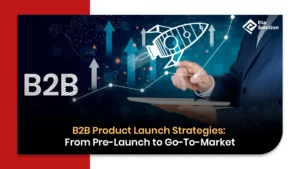
B2B Product Launch Strategies: From Pre-Launch to Go-To-Market
